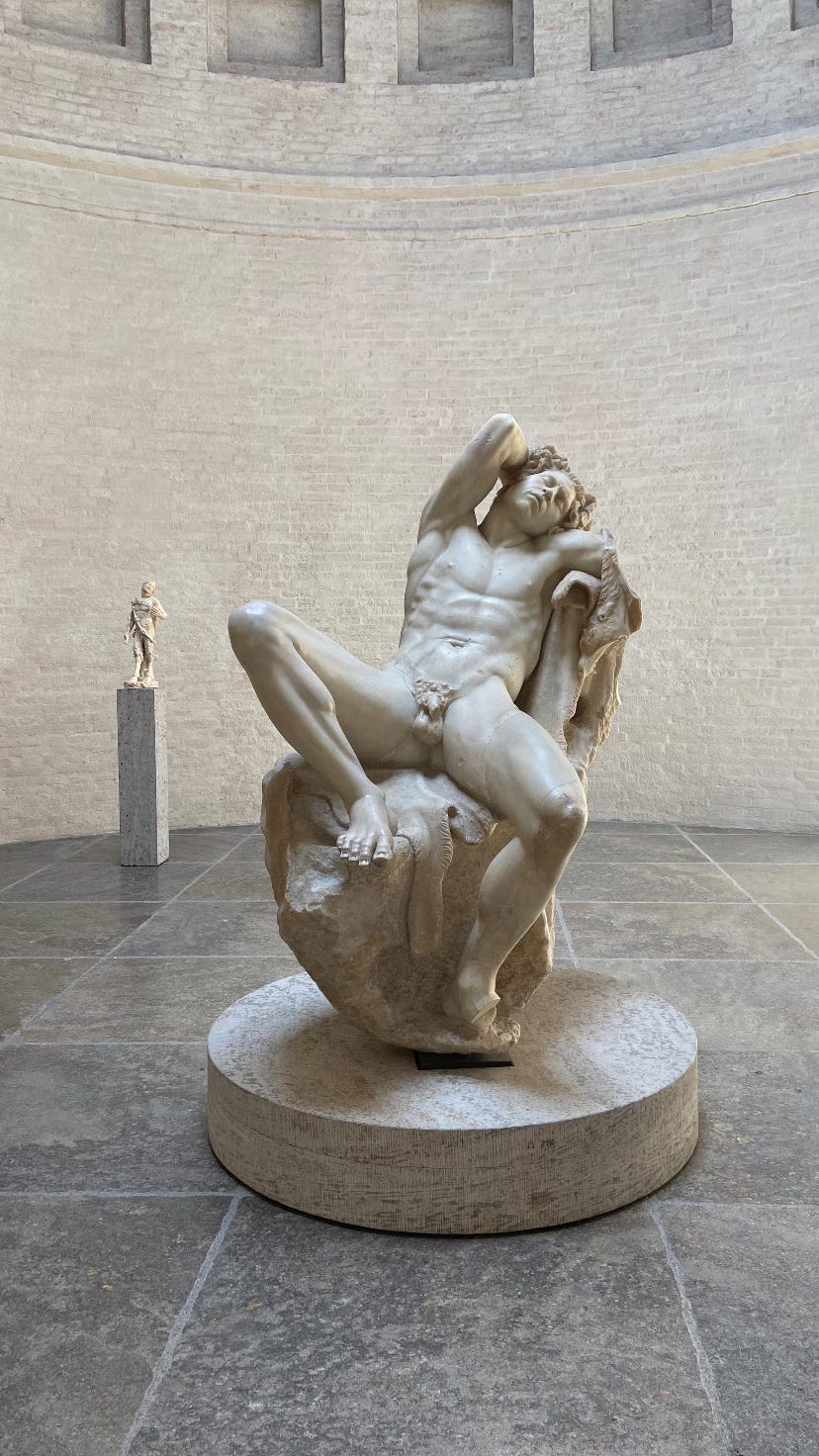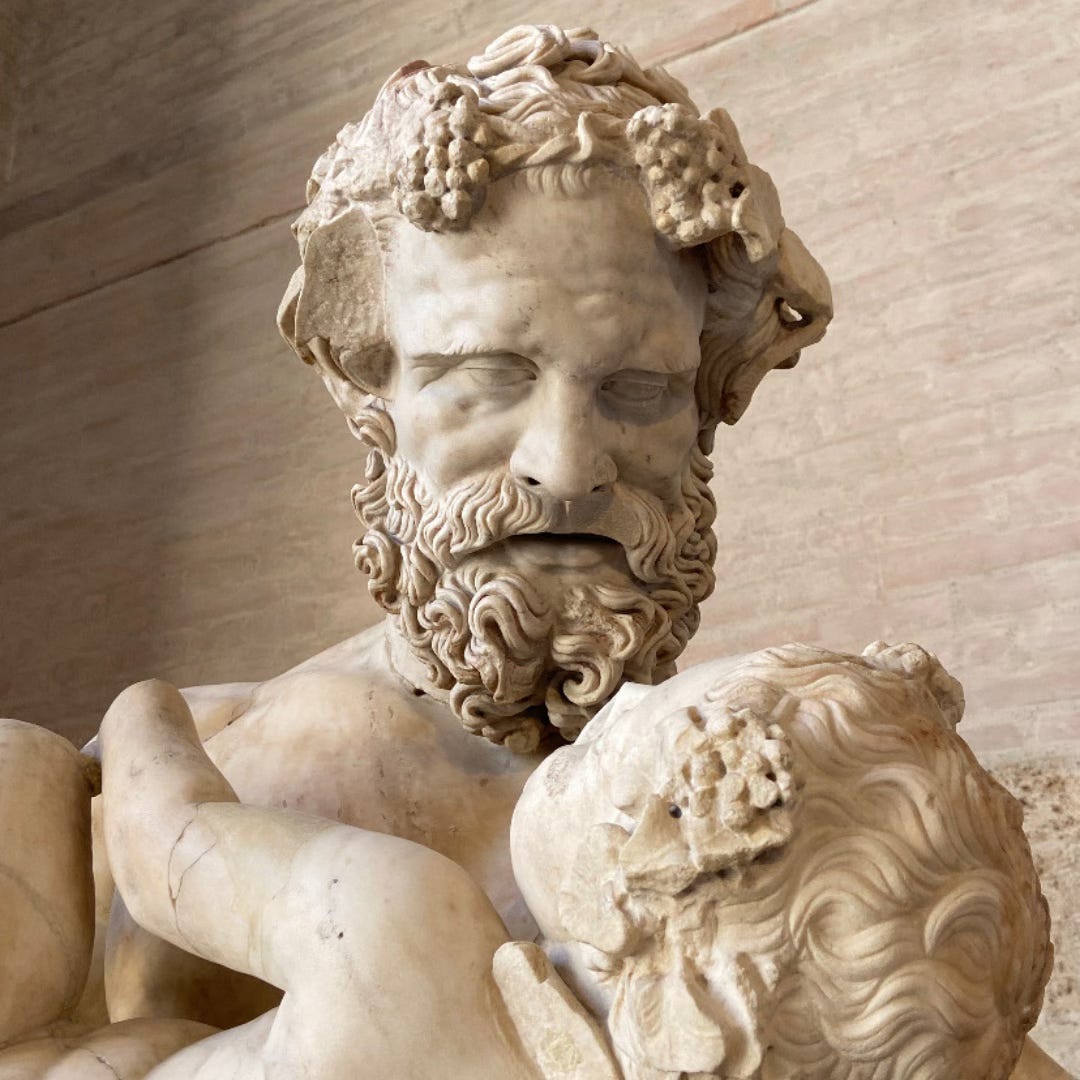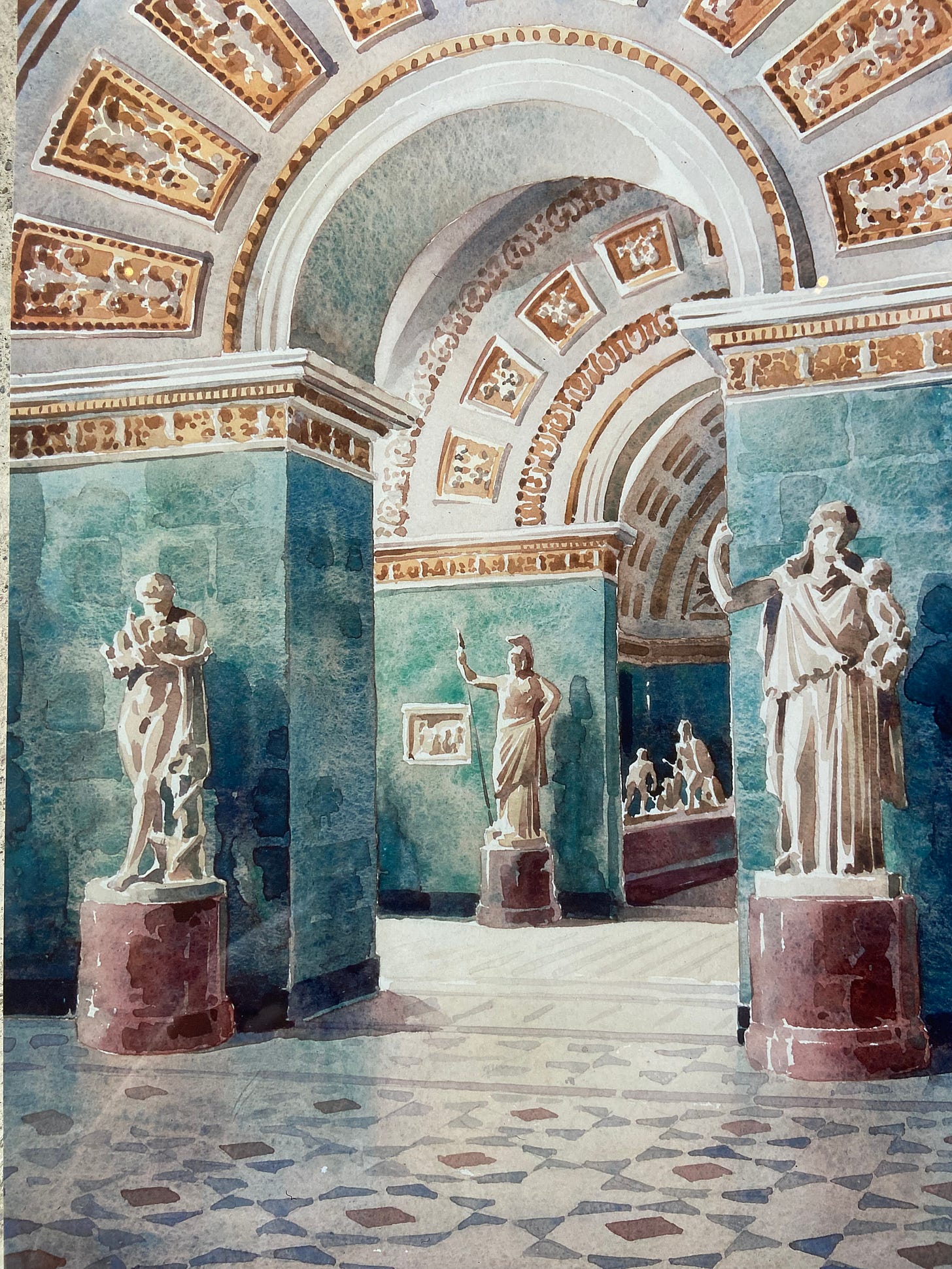November 13th, 2024
Hello, Fellow Readers, and Happy Wednesday,
I hope you all are having a wonderful week!
In June, I embarked on an exciting journey to Munich to celebrate a birthday with my partner's family. As it was my first visit to this vibrant city, we extended our stay for a few extra days, allowing me to explore its rich cultural landscape.
When I learned about our trip, my curiosity was piqued, and I dove into researching the city's museums. While browsing images online, I stumbled upon the Barberini Faun at the Glyptothek Museum. Instantly captivated, I knew this would be a must-visit destination for me.
The atmosphere evoked memories of the statue rooms at renowned institutions like the Louvre, the Metropolitan Museum of Art, and Palazzo Altemps in Rome. I envisioned spending a delightful day there—taking photographs, sketching, and wandering through the exhibits.
For me, statues are a treasure trove for photography and drawing. They remain still, allowing for exploration from various angles, while the interplay of light on stone creates an enchanting visual experience.
The Glyptothek: A Neoclassical Gem in the Heart of Munich
In the bustling city of Munich, nestled within the elegant Königsplatz, stands a testament to one man's passion for ancient art - the Glyptothek. The term Glyptothek is derived from the Greek words "glyphein," meaning "to carve" or "to sculpture," and "theke," which translates to "repository" or "container." Thus, Glyptothek essentially means "a place for sculptures." This modern nomenclature aptly reflects the museum's purpose as a dedicated space for housing and showcasing an impressive collection of ancient sculptures. This remarkable museum, with its imposing Neoclassical facade, holds a treasure trove of Greek and Roman sculptures that have captivated visitors for nearly two centuries.
A Royal Vision
The story of the Glyptothek begins with Crown Prince Ludwig I of Bavaria, whose love affair with ancient art was ignited during a trip to Italy in 1804-1805. Determined to share his growing collection with the public, Ludwig commissioned architect Leo von Klenze to design a museum worthy of housing these masterpieces. Construction of the Glyptothek began in 1816 and was completed in 1830, making it Munich's oldest public museum. The building itself is a work of art, designed to resemble an ancient Greek temple with its impressive facade featuring Ionic columns.
A Modern Experience in an Ancient Setting
Today, the Glyptothek offers visitors a unique experience. The museum's layout, a one-floor space in the shape of a square with an open-air patio in the middle, invites leisurely exploration. Visitors can take a break in the courtyard cafe, sketch in their journals, or simply admire the timeless beauty of the sculptures. Simply Munich showcases the museum through video.
A Collection Like No Other
The Glyptothek's collection spans several periods of ancient art, including the Archaic, Classical, Hellenistic, and Roman Imperial eras.
Among its most prized possessions are:
The Barberini Faun, acquired by Ludwig in 1813
Pediment sculptures from the Temple of Aphaia in Aegina, Greece
The Munich Kouros, a grave statue of a young boy from Attica
The portrait of Homer and the Medusa Rondanini
What makes this collection truly special is that it was funded entirely from Ludwig's private purse, showcasing his dedication to preserving and sharing these ancient treasures.
The Barberini Faun is a remarkable Hellenistic marble sculpture with a fascinating history. Here's a brief overview:
Discovery and Early History
The statue was discovered in the 1620s in Rome during renovations of the Castel Sant'Angelo, which was originally Hadrian's Mausoleum. It was found in a moat below the castle, heavily damaged with missing parts.
Barberini Ownership
By June 1628, the statue was in the possession of Cardinal Francesco Barberini, nephew of Pope Urban VIII. The Barberini family displayed it in their gardens and considered it one of the prized pieces in their ancient art collection.
Restorations and Sales
The statue underwent several restorations:
Initial restorations were done in stucco.
In 1679, Giuseppe Giorgetti and Lorenzo Ottoni carried out more extensive work.
In the 18th century, the right leg was restored in marble.
In 1799, Vincenzo Pacetti performed further restorations.
The Barberini family sold the statue to Vincenzo Pacetti in 1799. After a legal dispute, it was returned to the Barberinis in 1804.
Acquisition by Ludwig I of Bavaria
In 1814, the Barberini family sold the Faun to Prince Ludwig of Bavaria (later King Ludwig I). Despite attempts to block its export from Italy, the statue left in 1819 and was installed in the Glyptothek in Munich by 1820, where it remains today.
Artistic Significance
The Barberini Faun is considered a masterpiece of Hellenistic sculpture. It depicts a sleeping satyr in a sensual pose, marking a shift in the representation of these mythological creatures from aggressive to objects of desire. The statue is notable for its overt sexuality and skilled craftsmanship. While its exact origin is debated, most scholars date the statue to the late 3rd or 2nd century BCE, attributing it to the Pergamene school of sculpture.
Resilience Through Time
Like many historical buildings in Europe, the Glyptothek has faced its share of challenges. It suffered damage during World War II but was painstakingly restored and reopened in 1972. More recently, between 2018 and 2021, the museum underwent extensive renovations to ensure its continued preservation.
Practical Information
The Glyptothek is open Tuesday through Sunday, from 10 am to 5 pm, with extended hours until 8 pm on Thursdays. Admission is €6 for adults, with reduced rates available. Children and teenagers under 18 can enter for free.
A Legacy of Art and Culture
The Glyptothek stands as a monument to Ludwig I's vision of creating a "German Athens" in Munich. It's a place where visitors can immerse themselves in the world of ancient art, experiencing firsthand the beauty and craftsmanship of sculptures created millennia ago. As the only museum in the world solely dedicated to ancient sculpture, the Glyptothek holds a unique place in the cultural landscape. It's not just a collection of artifacts, but a living testament to the enduring power of art to inspire and connect us across the centuries. Whether you're an art enthusiast, a history buff, or simply someone looking for a moment of tranquility in the heart of Munich, the Glyptothek offers a timeless escape into the world of ancient beauty.
Thank you for reading!
Tell me, Substack Reader, have you visited the Glyptothek? If not, what was the last museum you visited? Comment below!
I hope I have inspired you to pursue your dreams and that you will stick around to see how my journey turns out!
✍️Recent Post
📚Recent Reads
On Writing Well by William Zinsser
Write a Must-Read by AJ Harper
Two O'clock on a Tuesday at Trevi Fountain by Helene Sula
She Means Business by Carrie Green
I hope I have inspired you to pursue your dreams and that you will stick around to see how my journey turns out!
If you appreciate these newsletters, consider subscribing to help me continue to write full-time.












